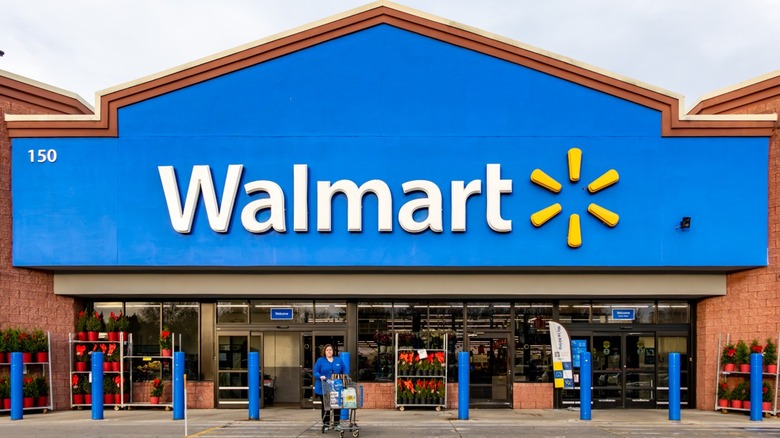The Biggest Grocery Store Chain In America Is Miles Above The Rest
Having to visit a chain grocery store for any and all of your basic necessities has become inevitable, no matter if you're living in an urban city, a suburban community, or a rural small town. While choosing to support small businesses within our local communities (by shopping at a local, independent grocery store, for example) is always encouraged for a myriad of reasons, at some point everyone will have to resort to going to a large chain grocery store since the shelf-space within private grocery stores is significantly more limited in terms of the inventory it can hold.
One such big-box grocery store you might find yourself in is Walmart, since Walmart is the world's largest grocery retailer — there are 13 Walmart stores per 1 million people in the U.S., to be exact. Translated into profit, that makes Walmart untouchable in comparison to its "competitors" like Costco, Kroger, Target, and Albertsons.
In 2023, Walmart's global turnover was $611.3 billion dollars. A full 69% ($421.8 billion dollars) of that was generated from U.S. Walmart shoppers. According to research surveys conducted in February 2024, most Americans said their favorite grocery store retailer was actually Costco or H-E-B, yet Walmart still manages to bring in about six times as much revenue as these stores since consumers can't deny the convenience and price point.
Convenience plus low prices
Although Walmart has proven itself to be unavoidable by the average everyday consumer, it's not like customers are leaving dissatisfied or not returning. This is because consumers can't deny convenient goods sold at a great price. Walmart prominently markets themselves as the store with an "Every Day Low Price" guarantee, and it's true. Walmart is able to offer 20% lower prices on groceries than the average grocery store. The company is able do this through a number of business strategies.
One of the main strategies is having such a massive amount of stores, thereby allowing larger quantitates of inventory to be purchased at lower costs from suppliers; yielding cheaper prices for consumers. Furthermore, Walmart knows that they'll still be able to generate equal or greater profits by selling groceries at lower costs since there's a higher volume of goods being purchased due to how widespread Walmarts are.
If you're wondering what the other top five grocery store chains ranked in comparison to Walmart — Costco, one of America's beloved grocery stores, came in second place with an overall turnover of $173.5 billion dollars among their 861 stores worldwide and 591 stores in the US. Kroger was third place with an overall turnover of $150.04 billion from its 2,800 stores across the US. Target reached $107.4 billion dollars coming from over 2,000 stores across the US as well as from sales generated from their online shopping platform. Lastly, Alberton's – which will soon merge with Kroger — came in fifth at $79.24 billion dollars from 2,269 grocery stores across the US.

